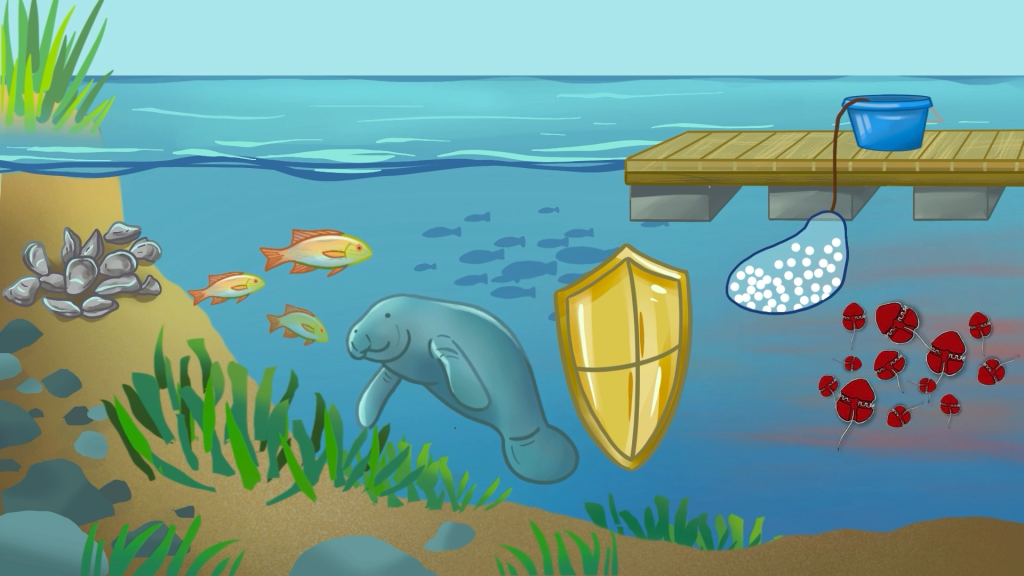We will field test an environmentally neutral method to control harmful algal blooms. Our work will provide managers with information on the applications of a natural algicide as an environmentally neutral approach to prevent or mitigate dinoflagellate blooms.
Why We Care
Blooms of the harmful dinoflagellate Karenia brevis occur regularly in the Gulf of America (formerly Gulf of Mexico) and present a threat to human health, as they produce a class of potent neurotoxins. K. brevis forms extensive, and often persistent, blooms in the Gulf of America, with highest concentrations typically observed along the southwest Florida coastline. In this region, K. brevis blooms often occur in late summer or early fall and last for three to five months annually, but have been observed to last for up to 18 months.
K. brevis blooms pose one of the most significant risks to Florida coastal communities due to the toxins produced. They possess a neurotoxin called brevetoxin that aerosolizes as waves break on beaches. Onshore winds can carry the aerosols into the community, causing people to experience varying degrees of eye, throat, and respiratory irritation. Brevetoxins can also be concentrated in the guts of bivalve mollusks such as clams and oysters, which when consumed, are associated with the illness neurotoxic shellfish poisoning. Toxic blooms in Florida also have negative effects on the economies of coastal communities, often costing millions of dollars in lost revenue, with impacts extending over hundreds of square miles.
What We Are Doing
Prior Prevention, Control, and Mitigation of HABs (PCMHAB)–funded research demonstrated that Shewanella sp. IRI-160 secretes water-soluble algicidal compounds, designated “IRI-160AA,” which control the growth of dinoflagellates without the need for direct bacteria-algae contact. A goal of this project is to demonstrate the utility of slow-release alginate hydrogels containing the immobilized algicidal bacteria or the bacteria’s algicidal product for red tide management.
The project team will conduct studies initially in Delaware via mesocosm experiments, which will then be scaled-up for field demonstration in small, protected embayments in Florida that are already considered impaired due to blooms of Karenia spp. A major objective of this project will be to engage stakeholders and end users in support of this technology. Social surveys and workshops will be conducted to assess the societal tolerance of using the algicide.
Successful completion of this work will provide managers with knowledge of the appropriate uses of algicide as an environmentally neutral approach to prevent or mitigate dinoflagellate blooms. This project is considered phase 3 research, building on two previously funded PCMHAB projects:
Dr. Kaytee Pokrzywinski with NCCOS and Dr. Kathryn Coyne of the University of Delaware co-lead this project. Co-investigators are Drs. Yanfei Wang (University of Delaware) and Alan Kennedy (U.S. Army Corps of Engineers – Engineer Research and Development Center). The project is funded through the NCCOS Prevention, Control, and Mitigation of Harmful Algal Blooms Program.
The following video provides more information on the project partners’ contributions to the development of DinoSHIELD:


